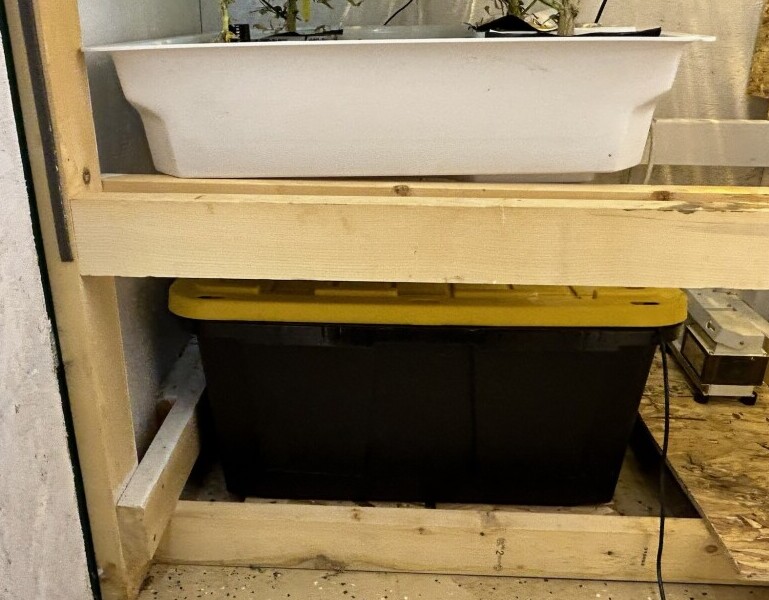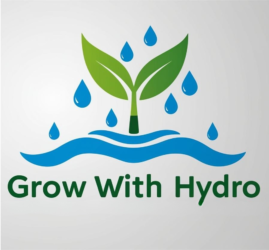-Understanding Ebb and Flow Systems
If you’re a gardening enthusiast or exploring sustainable growing methods, you’ve likely come across hydroponics. Among the various hydroponic systems available, the Ebb and Flow system stands out for its simplicity, efficiency, and adaptability. Known for its flood-and-drain cycles, this system provides plants with essential nutrients and oxygen in a soilless environment. Let’s dive into what makes Ebb and Flow systems tick, their benefits, and how to set one up.
Definition and Core Principles of Ebb and Flow Systems
At its core, an Ebb and Flow system works by intermittently flooding a grow tray with nutrient-rich water and then allowing it to drain back into a reservoir. This cycle ensures plants receive the necessary nutrients and oxygen for optimal growth. The system’s design allows for flexibility and can accommodate various plant types, making it a favorite among hobbyists and commercial growers alike.
Historical Context: Origins and Evolution
The concept of growing plants in soilless systems dates back thousands of years. The Hanging Gardens of Babylon and the floating gardens of the Aztecs are early examples of hydroponic techniques. The Ebb and Flow system, as we know it today, emerged in the mid-20th century as advances in technology made it possible to automate watering processes. It has since evolved into a cornerstone of modern hydroponics, offering efficiency and sustainability.
Basic Components: Trays, Pumps, Reservoirs, and Timers
An Ebb and Flow system consists of four main components:
- Tray: These hold the plants and their growing medium, such as clay pebbles or rock wool. They are periodically flooded with nutrient solution.
- Pump: A submersible pump moves the nutrient solution from the reservoir to the trays during the flooding phase.
- Reservoir: This is where the nutrient solution is stored. It should be covered to prevent contamination and evaporation.
- Timer: These control the flooding cycles, ensuring plants receive nutrients at precise intervals.

The Scientific Basis: Capillarity and Osmosis
The Ebb and Flow system relies on fundamental scientific processes:
- Capillarity: Nutrient solutions rise through the growing medium, allowing roots to absorb them efficiently.
- Osmosis: Nutrients and water pass through the plant root membranes, promoting healthy growth. This balance of water and oxygen intake is key to the system’s success.
The Principles of Sustainability in Hydroponics
Hydroponics, including Ebb and Flow systems, aligns with sustainability goals by:
- Using significantly less water than traditional soil gardening, as the nutrient solution is recirculated.
- Reducing the need for chemical pesticides and herbicides in a controlled environment.
- Allowing for higher yields in smaller spaces, making it ideal for urban and indoor farming.
-Mechanics of Ebb and Flow Systems
How the System Operates: Flood and Drain Cycles
The system’s operation revolves around alternating cycles of flooding and draining. During the flood cycle, the pump activates, filling the tray with nutrient solution. This immerses the roots, allowing them to absorb nutrients and oxygen. The drain cycle occurs when the timer shuts off the pump, and gravity pulls the solution back into the reservoir. This cycle ensures that roots are not waterlogged and remain oxygenated.
Benefits of the Automated Watering Process
Automation is a significant advantage of Ebb and Flow systems. The timed cycles eliminate guesswork, ensuring plants receive consistent care. This efficiency saves time and reduces the likelihood of human error, making it an excellent choice for beginners and experienced growers alike.
Common Configurations and Layout Options
Ebb and Flow systems are highly adaptable:
- Horizontal setups: Ideal for smaller spaces, with grow trays placed on benches.
- Vertical setups: Maximize space by stacking trays, suitable for larger-scale operations.
- Modular designs: Allow for expansion and customization based on growing needs.
Role of the Timer in Precision Nutrient Delivery
The timer is the brain of the Ebb and Flow system. It regulates the frequency and duration of flooding cycles, which can be adjusted based on plant type, growth stage, and environmental factors. Proper timing ensures plants receive just the right amount of nutrients without over-saturation.
Ideal Plant Types for Ebb and Flow Systems
This system works best for:
- Leafy greens: Lettuce, spinach, and kale.
- Herbs: Basil, cilantro, and mint.
- Small fruits: Strawberries.
- Ornamental plants: Flowers like orchids and marigolds.
Larger plants, like tomatoes or peppers, can also thrive with proper support and adjustments.
-Advantages of Ebb and Flow Systems
Maximizing Nutrient Uptake Efficiency
The cyclic nature of Ebb and Flow systems ensures that plants have constant access to nutrients while allowing oxygen to reach the roots during the draining phase. This balance optimizes growth and yield.
Reduced Water Usage Compared to Traditional Soil Methods
By recirculating the nutrient solution, Ebb and Flow systems drastically reduce water waste. This efficiency makes them an eco-friendly option, especially in regions facing water scarcity.
Flexibility in Planting and Scalability for Varied Operations
From small home setups to large commercial operations, Ebb and Flow systems can be scaled and customized to suit various needs, making them accessible to growers of all levels.
Mitigation of Common Plant Diseases
The controlled environment of an Ebb and Flow system minimizes exposure to soil-borne pests and diseases. Proper maintenance further reduces the risk of fungal infections and root rot.
Enhanced Growth Performance Outcomes
With precise nutrient delivery and oxygenation, plants grown in Ebb and Flow systems often exhibit faster growth, higher yields, and improved quality compared to traditional methods.
-Challenges and Solutions in Ebb and Flow Systems
Managing Risk of System Failure: Flooding and Draining Efficiency
A malfunctioning pump or timer can disrupt the flood and drain cycles, leading to overwatering or dehydration. Regular maintenance and backup systems can mitigate these risks.
Balancing pH and Nutrient Levels Effectively
Maintaining the correct pH and nutrient balance is crucial for plant health. Regular monitoring and adjustments ensure optimal growing conditions.
Preventing Root Diseases with Maintenance Routines
Stagnant water can lead to root diseases. Cleaning the system, replacing nutrient solutions regularly, and using proper aeration techniques can prevent these issues.
Troubleshooting Common Issues: Obstructions and Leaks
Clogs in the pump or tubing and leaks in the system are common problems. Regular inspections and immediate repairs can keep the system running smoothly.
Integrating Technology for System Monitoring and Control
Modern advancements, such as automated monitoring systems and smartphone apps, allow growers to track and control their Ebb and Flow systems remotely. These technologies enhance precision and reduce the risk of human error.
Conclusion
Ebb and Flow systems offer a versatile, efficient, and sustainable approach to hydroponics. Whether you’re a beginner or an experienced grower, this system can help you achieve impressive results with minimal effort. By understanding its mechanics, leveraging its benefits, and addressing potential challenges, you’ll be well on your way to a thriving soilless garden.

Been using an ebb and flow system for my tomatoes for the past two years, and honestly, it’s a game-changer. I used to struggle with inconsistent watering, leading to uneven growth. This system solved that completely.
The roots get thoroughly saturated during the flooding cycle, and then they have plenty of air during the drain phase. This year, the yield is substantially better and the plants are so much healthier. I highly recommend it to anyone looking for a more hands-off, yet highly effective irrigation method, especially if you’re growing in containers.
Ebb and flow systems have always intrigued me because of their simplicity and efficiency. It’s amazing how they mimic natural watering cycles, but with so much control. I’ve been using one for growing lettuce and herbs, and the growth rate is incredible compared to traditional soil methods. One thing I’ve always wondered is how these systems handle plants with varying water needs. For example, if I wanted to grow both leafy greens and a fruiting plant like tomatoes in the same setup, would I need to tweak the flood schedule, or would that compromise the growth of one crop? Another challenge I’ve faced is algae buildup in the reservoir, especially when the setup gets even a small amount of light exposure. Do you have tips on minimizing that, aside from covering the reservoir completely? I also think it’s fascinating how ebb and flow systems can be scaled—from a small home setup to a commercial operation.
Ebb and flow systems are a popular choice in hydroponics due to their efficiency and adaptability. The explanation of how they work, cycling water and nutrients to plant roots, makes it clear why they’re favored by many growers. What are the key factors to consider when setting up an ebb and flow system for optimal plant growth?